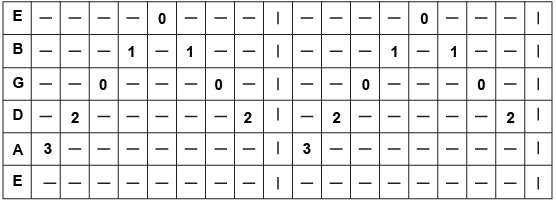There are no items in your cart
Add More
Add More
| Item Details | Price | ||
|---|---|---|---|
By Tony Das Published on: Wed Mar 30, 2022
We let the notes ring into each other for a lush sound. There are two ways to go about this – counting in 8 notes and counting in 6 notes. This is essentially -1-2-3-4-5-6-7-8-1-2-3-4-5-6-7-8- and with each count you would be playing a different note of the chord. Arpeggiating chords is easier to do with some chords than others.

A celebrated guitarist who has performed with well-known bands for two decades, your teacher is a professional musician who has played at some of the biggest music festivals in India, and toured the UK and the Gulf as well. As a guitarist, bassist and singer, he has worked on several film scores and movie songs.
Arpeggio is a technique in guitar for playing chords one note at a time, instead of all together at once. But we let the notes ring into each other for a lush sound. Try this with the C Major Chord, using downstrokes when you are ascending in pitch and upstrokes when you are descending in pitch. You can also add in the G Major Chord for a more fun exercise.
There are two ways to go about this – counting in 8 notes and counting in 6 notes. You can count out loud and play the strokes coinciding with the count. This is essentially -1-2-3-4-5-6-7-8-1-2-3-4-5-6-7-8- and with each count you would be playing a different note of the chord.

This is easier to do with some chords than with others, because they are laid out in a way that makes it easy to arpeggiate them. For example, in the C chord, you would be playing four strings that are right next to each other, ascending in pitch, and then descending back to the C note (or root note) that you started with.

However, if you’re doing this with the G chord for instance, and with the 8 count, you may need to skip a few strings so that you’re back to the G note (count 1) after one full ascending and descending cycle. In terms of strings, how you would play this is: String 6-4-3-2-1-2-3-4-6

The reverse is also true in the case of chords like D Major, where you don’t have enough notes for the 8 count. To ensure an even playing experience, how do you adapt the technique? We can add in variations and combinations to increase the number of strings played, while still being within the span of 4 strings that are used for the D Major Chord. How you would play this is: String 4-3-2-3-1-3-2-3-4
Irrespective of whether the chord has too many or too few notes for the 8-count arpeggio, you can come up with interesting patterns and simple fixes to ensure you arrive back at the root note on count 1. Now experiment with the 6 count for the C chord.

Arpeggios are an interesting way of making our songs, especially the slower songs or ballads, sound a little more interesting. Instead of just strumming the chords one downstroke per count, we can arpeggiate them to add some extra flair.
As you would’ve realised by reading through this post, there is often no fixed way to play an arpeggio. But that’s what makes it such a fun exercise to discover new patterns and learn as you go. In the next blog post, you will learn to play a song that used to be extremely popular in the 80s-90s. Keep reading to discover which song and how to easily play the cool intro riffs and other parts in it.